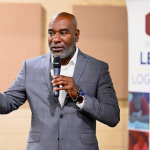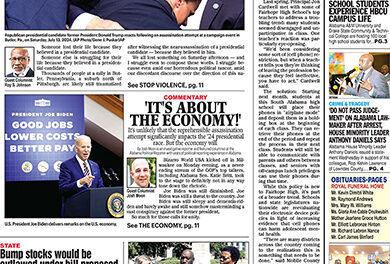By Aria Brent
AFRO Staff Writer
abrent@afro.com
Black youth are overrepresented in the foster care system in the United States.
According to the Adoption and Foster Care Analysis and Reporting System (AFCARS), there were 368,530 youth in the United States foster care system in 2022. Approximately 14,404 of that population represented youth ages 18 to 20, and 83,085 of the overall population were Black. Although this number was lower than the 156,570 White youth that were reported to have been in foster care that year, Blacks were disproportionately represented, since they comprise only 14 percent of the general child population but account for approximately 23 percent of those in foster care.

Additionally, Black youth in foster care are likely to fall victim to the system in a series of other ways.
“53 percent of Black children—and by extension their parents and families—will be investigated by child protective services…and 9.1 percent of Black children will experience foster care placement by their 18th birthday,” stated the Center for the Study of Social Policy in their 2022 “Systemically Neglected” report. “Once placed in foster care, Black and Indigenous
children spend longer in foster care than White children, are less likely to reunify with their families and are more likely to age out of care without a permanent connection to a loving adult.”
John DeGarmo has over 20 years of both lived and learned experiences with fostered youth. He explained the disadvantages that impact fostered youth the most as they become adults and age out of the system.
“When a youth transitions out of foster care, whether it’s at the age of 18 or 21–depending upon the state–it’s challenging for that child. Children in foster care are on average 18 months behind academically,”said DeGarmo. “A lot of youth in foster care don’t have simple skills such as hygiene skills, living skills, social skills, job application skills and they really flounder. For these youths who have been in the system all their life, they don’t want to be in it anymore so they leave once they turn 18 and, as a result, the statistics are pretty grim: 65 percent generally will end up incarcerated, 75 percent end up homeless, and then the system repeats itself for so many youth.”
DeGarmo further explained that most fostered youth don’t pursue college and those who do usually don’t finish. It was noted that this is often due to a lack of a support system, college readiness and inconsistent living situations during breaks from school.
“They struggle with reading and math skills. As they go from home to home and school to school, they fall further behind. Some do go to college and when they do, some of them will sign themselves back into foster care through a program that allows them to have free room and board in college. About 6 percent will go to college and about 2 percent will graduate with a four year degree.
Arielle Skinner, a former foster child and the founder of Fostering Bridges, faced many of the issues DeGarmo spoke about, however, she is now using her story to help empower other youth in foster care.
“I always knew I wanted to go to college and thankfully I was a part of a program in high school that exposed us to college life. Every weekend we would go to the campus of Norfolk State University and spend the weekend with students, see what they do, take college trips,etc.,” said Skinner. “Seeing the dreams and hopes I had for myself be possible in spite of was really encouraging to me. I ended up attending Norfolk State.”
While matriculating, Skinner dealt with a series of issues that can be challenging to the average college student, but they were especially difficult for her with no family and minimal support.
“When I attended Norfolk, I did their Summer Bridge Program and was able to stay in the Honors dorm because of it and that helped me a lot. It was difficult. I doubted myself a lot,” she said. “I questioned whether I would even be able to get into college, if I was smart enough and if I could really do it. I was just so scared.”
Skinner shared how her home life as a foster child impacted her living situation as she transitioned into college.
“It was tough, and then I was trying to figure out what my life as a college student looked like because my foster home wasn’t safe enough for me to stay there. I knew I was going to have to stay on campus and figuring that piece out was difficult,” she said. “Thankfully, a church blessed me with all the things that I needed for my dorm room, and I was able to start college feeling a little bit like a normal kid. The day that I moved on campus, my foster mom dropped all of my stuff down at the lobby of the dorm and left.”
The support and resources Skinner needed to truly make a place feel like home while in college is hard to come by for a lot of foster youth. Audra Stance, a California native with a passion for youth development, realized this early into her time as a foster parent and has since founded her organization BWIT Luxurious Fostering in 2021.
“Luxurious Fostering is providing our foster youth with housing that is upscale and provides a different vibe.We fully furnish our properties and provide decor and make it a livable and homey situation for our kids,” said Stance. “ This isn’t usually how living situations are done in this industry.”
Luxurious Fostering is a part of the national Independent Living Program (ILP) that is made available to foster youth once they’re between the ages of 18 to 21. Foster youth who are in college and in need of housing over breaks or who work and no longer care to live in a traditional foster home can participate in these programs once they come of age.
Stance is not only providing better living environments for foster youth ages 18-21 but she’s also working to assure they have the resources and soft skills they need to succeed as adults.
“We help with transitioning into adulthood by showing them skills like banking. A lot of our youth don’t know how to sign up and get a bank account or how to clean their home or how to pay a bill,” she said.
The youth advocate prides herself on the relatability she has to the youth she works with, noting that it makes it easier for them to trust her and to feel like she understands their experiences.
“These kids are troubled and a lot of them are from the hood and I am too and they love me for that because I’ve been through the kind of lifestyle they have. The only difference is I was blessed that my grandmother stood up and got me,” Stance said. “But I went through the same, traumatic situations so I kind of can relate to them. I speak their language.”
The need for empathy and relatability within our nation’s foster care system is strong, however, according to DeGarmo, the true root of the issue is retention. He noted that those who work within the system such as foster parents and caseworkers need better compensation and support in order for the system to succeed.
“Caseworkers today are overworked, overwhelmed, under-resourced, under-supported, understaffed, underpaid, and they don’t last very long either. There’s a real issue of retention for foster parents and caseworkers,” said DeGarmo. “If we can’t retain those two, the system simply is not going to work. We need to have more support services in place for them, so they can be better equipped to help the children in the system.”
The post Growing pains: What happens to fostered youth once they become adults? appeared first on AFRO American Newspapers.











